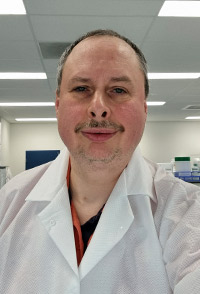Uncovering HIV’s Hiding Places
Researchers scour blood and tissues in search of an elusive marker for HIV reservoir cells
By Jeffrey Laurence, MD

Research question
HIV reservoirs persist in multiple cell types and tissues despite effective antiretroviral therapy (ART), presenting the primary obstacle to curing HIV. Revealing such HIV hiding places is thus critical to eradicating the virus.
One approach involves cellular labels, so-called phenotypic protein markers, several of which have been reported by multiple research groups as being enriched among HIV reservoir cells. Some of these proteins could also shield those cells from immune recognition and destruction and promote their survival, thus offering clues to novel types of ART.
But thus far no single marker, or combination of markers, can effectively distinguish HIV-infected cells from uninfected cells, or identify all latent reservoirs.
Findings
This comprehensive review clarifies the issues involved and progress made toward marker identification. It highlights technological advances permitting simultaneous profiling of genes and proteins in single cells, both those harboring intact HIV proviruses—potentially capable of being reactivated and releasing infectious virus—as well as defective viruses.
This is important as the average frequency of infected cells in the blood of people living with HIV (PLWH) on long-term ART is about 1 in 2,000. But there is only one-tenth as many cells containing intact proviruses—those thought most critical to target. In addition, many intact viruses are locked into “gene deserts” and cannot be activated. This renders the target even smaller. And if that were not complex enough, some defective, non-infectious pieces of virus can produce proteins that are thought to contribute to the chronic inflammation and cardiovascular disease commonly seen in PLWH on ART.
All tissues incorporate HIV reservoirs, with the lowest levels in brain and testes and the highest levels in lymphoid tissue. However, these hiding places are not absolute impediments to an AIDS cure, based on ten PLWH who have been cured following bone marrow (stem cell) transplants. But, absent such a high-risk procedure, used only in an attempt to cure a cancer, any targeting approach needs to spare uninfected cells.
Impact
The authors conclude that “exploring the vast and varied phenotypic landscape of the HIV-1 reservoir is a daunting task, which nevertheless needs to be accomplished in order to bring us closer to the lasting cure.”
amfAR’s role
amfAR was a funder of this research. amfAR grantee Dr. Alexander O. Pasternak, of the Academic Medical Center of the University of Amsterdam in the Netherlands, was a co-author of this paper.
Original article
http://www.ncbi.nlm.nih.gov/pubmed/39903363
Dr. Laurence is amfAR’s senior scientific consultant.
Share This:
